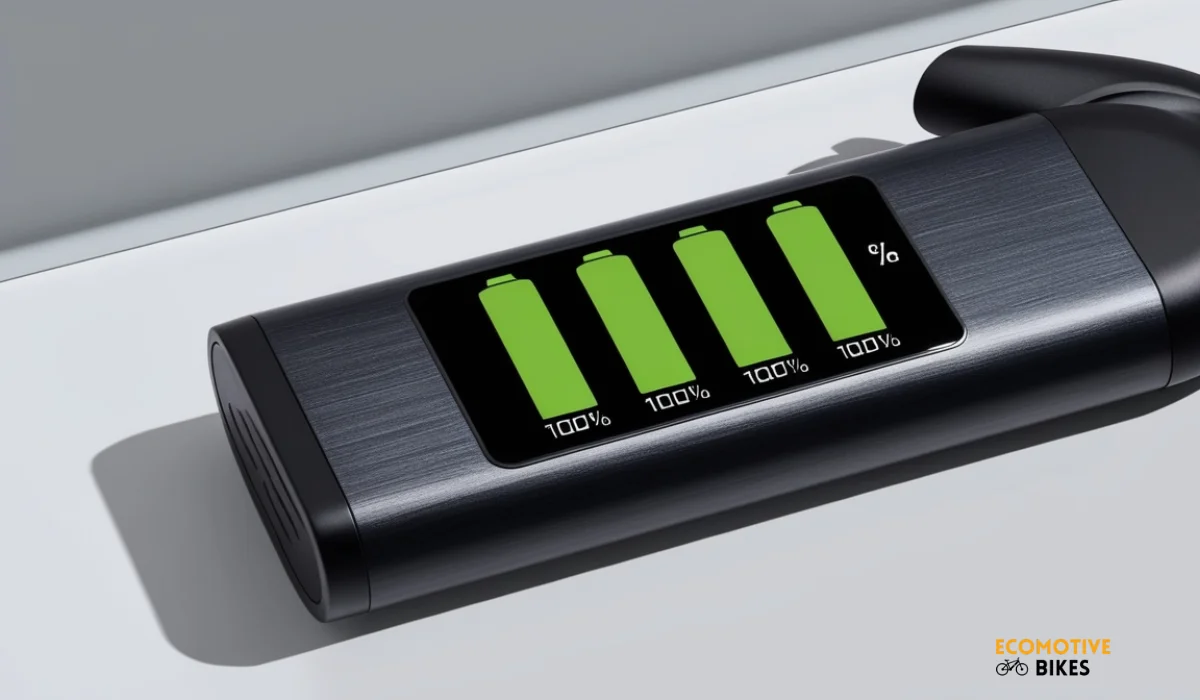E-Bike Battery Degradation Calculator
Use the E-Bike Battery Degradation Calculator to estimate how your e-bike battery's performance declines over time. Plan for optimal battery health and longevity.
Table of Contents
Related Articles:
The e-bike battery degradation calculator is designed to help e-bike owners understand how their battery’s performance decreases over time due to repeated charge cycles. Every time an e-bike battery is charged and discharged, it loses a small percentage of its capacity.
This tool provides an estimate of how much capacity remains after a given number of charge cycles, allowing users to predict the lifespan and efficiency of their battery.

How the E-bike battery degradation calculator works
Core concept:
- Battery Degradation over Time: e-bike batteries naturally lose capacity with each charge cycle due to chemical wear and tear. This degradation can be expressed as a percentage loss in capacity per cycle. For example, if a battery loses 0.5% of its capacity per cycle, over 100 cycles it will have lost 50% of its total capacity.
- Remaining Battery Capacity: By inputting the initial battery capacity, the number of charge cycles the battery has undergone, and the estimated capacity loss per cycle, the calculator will estimate the remaining capacity. This helps riders understand how much battery performance has declined and when it might be time to replace the battery.
- Performance Estimation: As the battery degrades, the distance per charge that a rider can achieve will also decrease. The calculator provides a realistic view of how this degradation impacts overall e-bike performance.
E-Bike Battery Degradation Calculator
How it works:
- Initial Battery Capacity: This is the rated capacity of the e-bike battery when new, measured in amp-hours (Ah).
- Charge Cycles: Riders input the number of complete charge cycles the battery has undergone. A charge cycle is a full discharge and recharge of the battery.
- Capacity Loss per Cycle: This is the estimated percentage of capacity lost with each charge cycle. Most batteries lose between 0.1% to 1% capacity per cycle depending on usage, quality, and conditions.
- Output: The calculator uses an exponential decay formula to calculate the remaining battery capacity after the given number of cycles.
Benefits of the calculator:
- Proactive Battery Management: Riders can use the calculator to predict when their battery will become inefficient, helping them prepare for maintenance or replacement.
- Cost Efficiency: By monitoring battery degradation, users can maximize battery lifespan and avoid premature replacements, saving on costs.
- Optimized e-bike Usage: Riders can adjust their riding habits or charging practices to extend battery life by observing how much capacity is being lost over time.
- Range Estimation: By knowing the remaining battery capacity, riders can estimate how far they can go on a single charge, which is particularly useful for planning longer trips.
How it helps riders:
- Battery Health Awareness: This calculator provides an easy-to-understand measure of how much capacity the battery has lost, helping users gauge the health of their e-bike battery over time.
- Maintenance Planning: Riders can estimate when they’ll need to replace their battery, allowing them to plan for replacement costs and avoid unexpected failures.
- Optimize Usage: Understanding how charging habits affect degradation encourages riders to adopt better practices, such as avoiding overcharging or deep discharges, which can prolong battery life.
- Ride Efficiency: As battery performance decreases, riders will need to adjust their expectations for range and riding conditions. The calculator helps them adapt to these changes, ensuring they aren’t caught off guard by sudden drops in performance.
By using this calculator, riders can manage and monitor their e-bike battery’s health, ensuring they get the most out of their battery while avoiding any surprises regarding capacity loss. It empowers e-bike owners to be more informed and proactive in maintaining their e-bike battery.
Check out the battery capacity usage calculator.




